
What is your salary expectation? – The best answer to this question in your next interview?
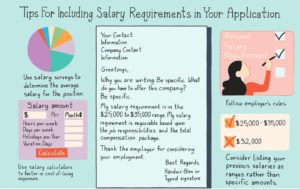
Salary expectation – The best answer to this question in your next interview.The best way to deal with a favourable revert form the employee on the Salary expectation questions.
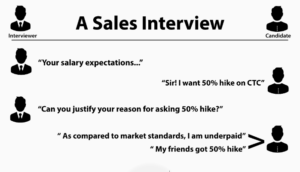
“What is your salary expectation?”

When a job candidate hears the question from a recruiter, the query may sound like a neutral request. But in fact, how you answer it will be the beginning of your salary negotiation for that job role.
There is a long debate about the best way to address this tricky question. Some people suggest skipping it, while others suggest it’s OK to give a salary range. In this article, we are discussing what to do when you face this situation.
What is the salary expectations query really about?

What a firm is really trying to find out is if you are in the same salary range as they are. Whatever you do, get prepared to address this common question. There are two times when hiring managers will ask about your salary expectations. First one is often right away. And the second is often right before you get the job offer. The recruiters are trying to get you to make it easier for them.
- If you do answer it with a number, make it a salary range
Answer this question with a salary range after conducting fine research. The salary expectations answer can be contextual. Analyse where you are standing in your career and what kind of industry you are working in.
Most senior professionals know what their market value is. And they have strong opinions about what their base pay needs to be for them to take the job. If you really have a strong perspective, be general with your specific ask. That way, you don’t commit to any number, and there can be flexibility.
To get a clear idea of what a reasonable salary range is, you can and should ask your colleagues about typical starting salaries for the role you are applying for. The more you discuss with people, the better off you are.
You can also do online research to land on a specific salary range. The most critical thing is to have a business case behind why you choose the range of salary that you do. It is better to start your salary range directly in response to the salary expectation query. If you allow them to give a number, they will anchor the conversation, and they will offer you a low payment.
- How to answer without stating a particular salary number
If you are a job seeker who does not want to state a particular salary range, you have options. For instance, you can say you will engage but at a later stage.
If you are asked point-blank by a hiring manager, you can say something like I am delighted to talk about it once there is an offer. Or that would totally depend on what the exact role is. You can say it as long as you are in an industry where there is not an expectation for you to answer.
If you are talking to a recruiter, you can state that you don’t want to talk about it. Your language can sound like: I prefer to concentrate on the value that I bring to your firm. I would like to mark job this as a big step ahead in terms of both responsibility and compensation. I do not prefer to talk about my salary expectations. And I don’t have an exact number in mind. And I look forth to hearing from you about what you think if we get to that stage.
- Turn the question back on the interviewer
The purpose is to show that you are flexible with your salary expectations answer. Another tactic is to turn the query back on the recruiter. You can ask them about salary ranges before you mention yours.
If you have done your homework well, you can use numbers in your answer. You can say like, according to my research, this job gets paid between X and Y. Is that compatible with the hiring range for this job role? This kind of answer shows that you are really trying to work with them to understand if you are in the same ballpark.
If you aren’t confident in your research, you can phrase the follow-up question politely as, without knowing more about the job entails and not knowing what the total compensation picture is, I would love to hear what your hiring range is.
The goal isn’t to engage about a number but to learn what a company is thinking about the salary first. Your whole goal here is to defer to them to make the first offer so you can see approximately where they value you.
- Salary expectations aren’t the same as the final job offer
Recognise that this discussion is the beginning of salary negotiation, not the end of it. If you learn new information about the job role later, you should feel empowered to ask them for a salary that is more aligned with those responsibilities.
Even if you get a lower ballpark range, you can adjust it upward later. But this is conditional only if you learned any new information about the job role or responsibilities. And you can make an argument for getting more work.

Three brain hacks to improve your concentration and to achieve focus amid distractions

Three brain hacks to improve your concentration and to achieve focus amid distractions. Improve your concentration with natural techniques.
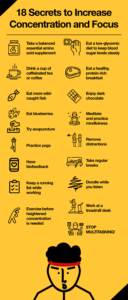
How many of you have sat at your office desk and tried to focus on a task? You found that your mind is wandering again and again? Despite your best intentions, you just can’t just concentrate. We have all been in this familiar, frustrating situation, and it’s something that can really undermine our performance.
In this article, we will review strategies that you can use to improve your concentration and to reduce your daily distractions.
How to improve your concentration amidst daily distractions?

Environment
Your personal work environment plays an immense role in your ability to focus. The more comfortable and welcoming your office environment is, the easier it will likely be for you to stay there and concentrate.
Here are amazing ideas for improving your physical environment:
- Make sure you are comfortable – Start by ensuring that your desk and chair are at the right height to work comfortably. If your chair and desk are too high or too low, you will be uncomfortable, and you will get tempted to use this as an excuse to get up and walk away.
- Put up pictures – Viewing natural scenery or watching wildlife can help improve concentration. If you can put up pictures in your office or work area, then choose landscapes or natural images that you enjoy. It can help your concentration, especially if you can see the pictures from your desk.
- Turn away from distractions as much as possible – Listening to music can help, especially if it’s instrumental music. Some people even use “white noise” apps, which produce a steady, undistracting noise like falling rain or ocean waves. This steady background sound can drown out other noise. It helps you focus better and ignore distractions.
Nutrition
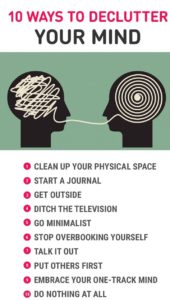
Follow a few simple nutritional tips:
- Drink water – Most people don’t think about drinking an adequate amount of water while we are at work. Dehydration can make us feel fatigued, irritable, slow, or even sick. When our brains don’t get enough fluid, they cannot operate at peak performance. Staying hydrated during work is an easy way to improve your focus during the day.
- Eat breakfast – Start your workday with a healthy breakfast. It’s much harder to concentrate when you are hungry. So, have a well-rounded meal before you go to work. You can also help your focus throughout the day by keeping healthy snacks at your desk. Almonds, crackers, fresh fruits, and vegetables are great choices.
- Get up and walk around – Do you have a habit of walking around during the day? There are many people who don’t prefer walking around enough. Research has shown that walking around regularly can help improve your focus during the day.
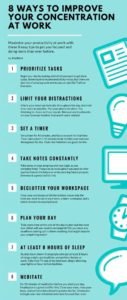
Mindset
Constant distractions, and the low productivity that is associated with these distractions, have become so commonplace in today’s offices. Doctors have even given it a name. That is Attention Deficit Trait or ADT. And, they say that the entire organisation can suffer from it.
Follow these guidelines to help focus your mind:
- Set aside time to deal with your worries – Many of us have trouble concentrating during the day because we are constantly worrying about other things. It can be an approaching deadline for a project you haven’t started yet, a new colleague who is causing issues, or just the amount of work piled up on your desk. If you find yourself distracted by any of these worries, then note it down so that you don’t need to hold them inside your mind. Then schedule a time to deal with these problems.
- Focus on only one task at a time – It can be harder to focus if you take minibreaks to answer emails, send text messages, or make quick phone calls. Some researchers say that it can take up to 10 to 15 minutes for us to regain complete focus after a distraction.
- Close your email inbox and chat boxes – Let your voicemail do its job. Close your cabin door or put up a “Don’t Disturb” sign if your office allows it. It let your co-employees know you need to focus. If you are a manager and you want to operate an open-door policy, then consider working from home or work from elsewhere for those times you need to focus.
- Switch between high- and low-attention tasks – It can give your brain a rest after heavy concentration. For example, if you spend two hours working on a high-attention task, you will probably feel tired afterwards. You can fuel your energy by working on a low-attention task for 15 minutes before going back.
- Prioritise – Having too much work to do cannot be a welcome distraction. And this sometimes causes procrastination. Or, you may jump from task to task quickly, creating the illusion of work. But in reality, you are not accomplishing very much. If you aren’t sure which tasks to start or which are most important, take 10 or 15 minutes to prioritise your To-Do list.
Limiting distractions let you get into the flow of your work, so you get more done. Improving focus takes work and effort. However, it isn’t necessarily essential to be a difficult or complicated process. In fact, all it really needs is to challenge yourself in some way.
When we challenge ourselves, we are forced to stay focused on what we are doing. And, staying focused for extended periods helps improve our concentration.
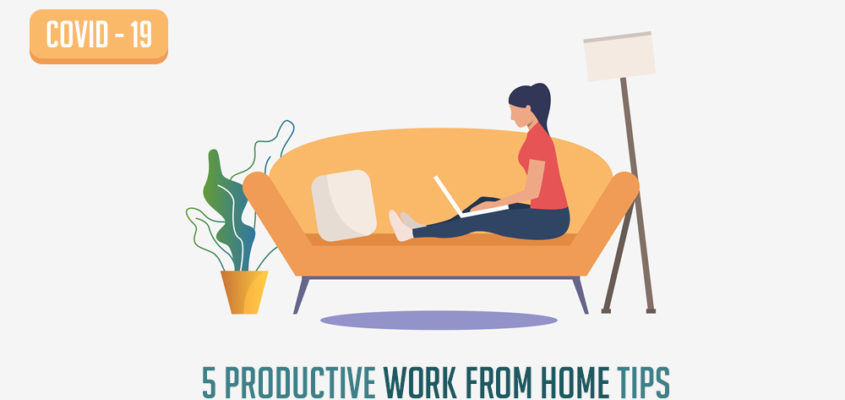
How to work from home along with your partner during the challenging times of coronavirus outbreak?
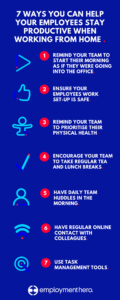
Work from home along with your partner on a Coronavirus epidemic is quite an exercise for all married men and women to be on a disciplined work mode status.

Neither I switched my job, nor added anyone to my team, yet I have a new co-worker. And I see more than anyone now.
My new co-worker is my husband. There are many people like me in working together with the community. They will be working from their respective home for the foreseeable future. It means that my workday is now happening in the same rooms as and sometimes right next to my husband’s workday. This new reality is teaching us all those things we never knew about our partner’s work-life, tasks and responsibilities.
There are several employees in many industries struggling hard through coronavirus-related shift cuts and layoffs. In this situation, we consider ourselves even luckier to be employed in industries that don’t require in-person attendance.
Eager to establish a sustainable working relationship with my deskmate/wife, I solicited advice from a few dozen people. Some of them have been working at home with their partners for years. And some are like me. They are swiftly learning what works and what doesn’t after getting forced to co-work for the first time. Here’s what experts say how to handle your working days along with your partner.

How to handle your Work from home along with your partner during the Coronavirus outbreak?
- We are all uncomfortable — and that’s OK
When you figure out your partner’s work schedule, you should change your work schedule accordingly. What a day at work looked like in the office hardly resembles what our new lives working from home have turned in to. And, that’s okay, we have to survive this situation. You have to accept reality and act according to that.
It’s completely understandable for many of us to feel like we’re out of our comfort zone. And to experience some ‘growing pains’ as we adjust to our new reality (for the time being). It makes it incredibly important to work as a team, directing your energy as a couple towards the common enemy (COVID19 related changes).
Having a morning meeting to discuss the plan for the day can be a simple way to alleviate some of the discomforts we are all feeling.
- Social distancing applies to your partner, too
It is crucial to have your own working space away from your partner if possible. Once you establish separate areas, it’s also necessary that couples respect the boundaries of that space during the workday. Creating baseline rules around when and how to interrupt each other during the day can go a long way to help preserve sanity as well. Also, while it may be tempting to take breaks together during the workday, taking breaks alone may be just as essential to maintaining sanity.
Distancing your work life from your home life as the spaces you are doing both become one is also important.
- Communicate, communicate, communicate. And then communicate again.
Ensure to do the best to avoid miscommunications about expectations while living in isolation. In this uncertain time, you can collaborate on a daily schedule that outlines both personal and professional obligations. Including things like outdoor activity and exercise is an excellent place to start. It gets everyone on the same page for how the workday will look different now that a commute into the office isn’t on the table.
It’s also necessary for couples to reconsider “who does what” during this time. For example, just because your partner was the one who did a majority of the cooking before the pandemic, re-evaluating those responsibilities will be key to staying productive during it.
- Give your partner some grace
Becoming more empathetic during this time may be the answer to a lot of the anxiety we are feeling. That especially applies to the person you are partnering with to get through the pandemic. Now more than ever, it is significant that we work together and practice ‘we ‘ rather than ‘me.’ With teamwork, we can manage this challenge and even come out stronger and better than we ever imagined.”
Give yourself and your partner some grace. These are unprecedented times, and we’re all dealing with a range of emotions about the current state of affairs. Be patient with your partner and yourself. And just remember that you are both doing the best you can, and these arrangements won’t last forever.
Bringing a bit of workplace like structure into the home can feel unnatural. But it still might help you keep yourself and your partner sane as you adjust to a new routine. Once you get adapted to your new normal, you will both be sighing with relief. And buy a new headphone. It won’t let you even hear each other.
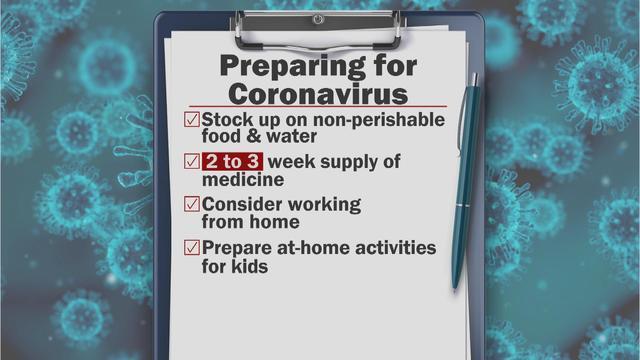
Coronavirus Pandemic – What are the right ways to work from home?
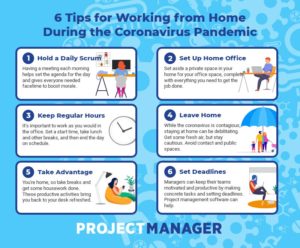
Coronavirus Pandemic – What are the right ways to work from home? Work from home on a Coronavirus Pandemic needs more concentration and dedication to be more productive.
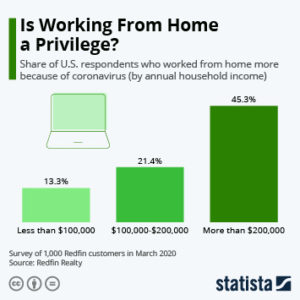
Most global companies, including industry giants, have rolled out mandatory work-from-home policies in the last few weeks amid the spread of Covid-19. And it’s realistic for most people to assume that shifting to the ‘home office’ will become the new normal for a while.
Some employees will be their first time working from home. It means figuring out how to stay on task in a new environment may not lend itself to productivity. But there are many ways to deliver results and avoid going stir-crazy, from setting up a proper workspace to the way you talk to your team. This blog is a quick read to know how to set up a good working space while working from home.

How to set up a pleasant working environment while Coronavirus Pandemic – work from home?

- Crank up the communication
Whether coronavirus is there or not, the key to working efficiently from home is clear communication with your boss. You should exactly know what is expected of you.
Have clear-set expectations for day to day communications. Ask your boss if they don’t mind having a ten-minute call to kick off the day and wrap up the day. Often, managers just haven’t thought of it.
Most people spend their working days close to their boss. It let their communication easy and effortless. But that is all out of the window with remote work. And communication breakdown will be even more likely if your workspace isn’t used to remote working. For example, your manager might not be used to managing people virtually. Or your firm might not have a ready-to-go suite of tools for remote employees, like the chat app or video conferencing app.
But even for those people accustomed to it, working from home can feel unstructured and isolating. Loneliness can make workers feel less motivated and productive.
So, when you do communicate with your manager and the team from your home, make the conversation maximum richer as face-to-face communication.
- Treat it like a real job.
There is also some timeless Work From Home tips to call upon. For example, just because you can lounge round in your pyjamas doesn’t mean you actually should. Take a shower and get dressed. Treat it like a real job.
If you have no home office, do as much as you can to generate an ad hoc, bespoke space exclusively for work purpose. Without a well-equipped home office space when remotely working can cause a temporary decrease in productivity.
So, instead of lying on the bed with a laptop, try something deeper. The fix could be something very simple as moving a nightstand into a corner far away from distractions. You can plop down your computer and sitting in an upright chair like you would at your office desk. It also serves as an essential signal to those who live with you that you are ‘at work’.
- Be inside your own boundary
Create your own boundaries within your home that your family members understand you are working. With a dedicated workspace where you can focus, it becomes easier to unlock the benefits of remote work.
Yet it’s also vital to bookend your day. You should have the ability to unplug after work. If you cannot commute or enter and leave a physical home office provides a clearer boundary to the workday. It helps you have the right mindset like a twenty-minute coffee in the morning and then exercise right after the work to open and close the day.
Even if childcare is not an issue, it is still easy when you are home to think ‘Oh! I have laundry to do, let me do it real quick and so on. You have to put yourself in a mind-frame that you are really working.
Still, even with these tools, the abrupt and enforced nature of the transition from office space to a home environment could leave you struggling to get accustomed to the change. The coronavirus is pushing everyone into working from home, which is extreme to many people.
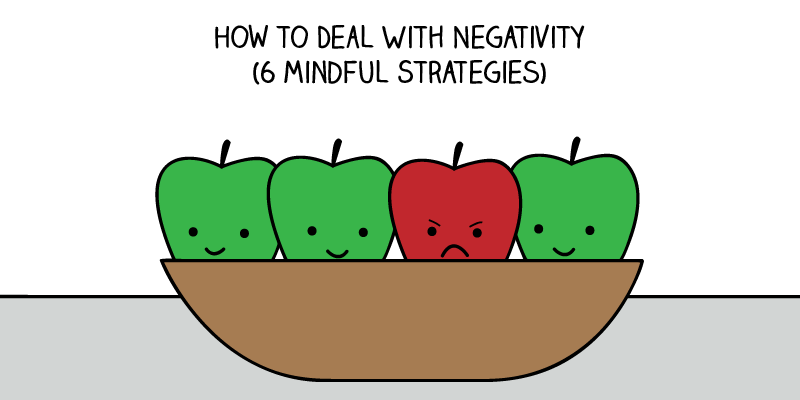
How to remain positive in a negative office environment?
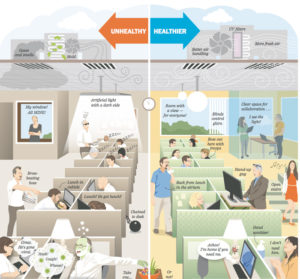
To be confident in a Negative office environment. Ways and means to be concrete in a Negative office environment.
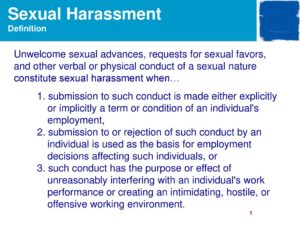
Today, we are running through a fast-paced business age. No matter the industry or profession, you will spend the majority of your weekdays hours at the office. A lot of people spend more time with their co-workers than with our families. And some days, the office feels more like our primary residence. It makes you feel distressed. So, how can we make it more tolerable?

The best remedy is making your work environment more positive. If Creativity, productivity and happiness go up, like a counterweight, stress levels sink. As a business owner or a leader, that’s the kind of workplace you strive to create. Since you are going to spend most of your workdays at work; you want it to be a place that inspires and nurtures your team and yourself!
Here are seven tips for building a work environment where your team can thrive:

How to build positivity in a Negative office environment?

- Begin with gratitude.
We believe that it is a privilege, not a right, to work together. Begin each of your weeks with a 15-minute all-hands team meeting where the first item on the list is team kudos. Give your employees a vehicle to express appreciation for one another in a public forum. It raises the morale of the whole group, and establishes a positive tone for the week and helps employees feel acknowledged and valued. Beginning with gratitude in any professional situation sets the intention of appreciation, which will permeate throughout the company.
- Create a safe atmosphere.
There is nothing damaging than toxicity in the workplace. It stifles new ideas and inhibits collaboration. Creating a safe work setting means eliminating negative personalities Respecting every idea, whether it is from an intern or a tenured senior employee. Lead your people with honesty, integrity and vulnerability to help them feel safe.
- Don’t put your dirty dishes in the sink.
This metaphor means, “Don’t leave a mess for anyone else to clean.” There is nothing more frustrating picking up a project from where someone left off. You will find that some files are missing, the work is a mess. Or someone saved a critical document to their desktop a few moments before boarding a flight for a vacation. Not leaving a mess is the functional definition, but the emotional interpretation is, “Respect other’s time.” If someone else has to duplicate your efforts or take time away from their day to day responsibilities to hunt for a missing document, you don’t care about their time. Time is our most valuable currency. When we are not respectful of our colleagues’ time, we are contributing to a negative workplace environment.
- There are only opportunities in business, no problems.
When our emotions are high and stress levels skyrocket, even the smallest workspace issues can seem like towering boulders. Tell your team that what they are experiencing is not a problem. It is an opportunity to reflect, analyse and evaluate for the next time. And there is always the next time; we’ll do better. Also, try to find irony or humour in every situation. Make your team members smile by bringing perspective to the situation. It can lighten a very emotionally charged room.
- Consistency is the key.
There are several new trends in company culture. It includes flex hours, team building, open workspaces, unlimited paid time off, bringing pets to work and the list goes on. It is easy to be tempted by what may seem like valuable workspace perks or try to replicate what competitors are offering to employees. However, the same approach won’t work for every company. You should consider consistency as a key, rather than getting distracted by the latest craze for professional culture. Although change can be healthy, meddling a good thing can be detrimental. It affects the cultural balance of your organization.
- Encourage positive thinking.
Life is short. Why waste time on negative behaviours that don’t align with your business’ moral compass? Encourage your team to think all the time positively. Sometimes things seem to be spinning out of control. We didn’t achieve the anticipated result. But positive thinking will eventually cultivate positive outcomes. Set weekly, monthly, and yearly positive plans as a group. It will help to align your team and ensure that everyone is facing the same North Star.
- Don’t sacrifice the important for the urgent.
It is easy to punt team one-on-ones for an urgent meeting or client call. But that connection with your teammates is crucial to maintain positive office culture. As a leader, you are the cheerleader of the firm and the glue that binds your organization together. Without a regular connection to your people, the mission, vision and energy of the business can quickly dilute. It can also degrade your cultural fibre. It’s okay to reschedule. Just don’t let essential conversations get replaced by abrupt demands and deadlines.
Dependability, structure, clarity and meaningful work all are ingredients. When this ingredient gets combined, it can culminate in a solid foundation for a positive workplace. Add your own awesome sauce and voila, and then you have the magic recipe!!


How to work under a bullying boss?

How to work under a bullying boss? A bullying boss in the workplace is a horrifying experience for any gender of the employee.ways and means to overcome a bullying boss.
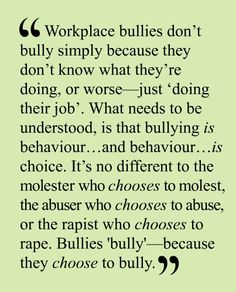
Is your boss bullies you constantly? The easiest way to answer this query is to check in on how you feel. Do you feel frustrated, scared, and dread going into the job as you get belittled, humiliated, neglected and cut down. Then, you are in a hostile work environment.
Typically, bosses who bully thrive on power and manipulate others. Unfortunately, the toxic boss may gain success from inducing fear in their staffs. But they will prove to have a shorter shelf-life when it comes to long term success.
Just know that you are not alone. The number one reason people swift their job is that they don’t like their boss. A toxic boss exists in almost every work environment. How will you handle it? Dive into the blog to know further.
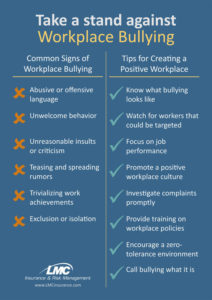
How to deal with a bullying boss?
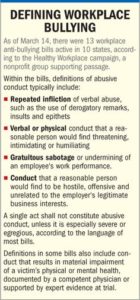
- Slip your focus from your boss to your work.
A bully is unlikely to change their behaviour, so your first option is to work to change yours. Instead of focusing on your intimidating boss, focus only on the details and tasks of your role. You have direct control over your performance. So, ensure you are focused on the right thing, which is your work, not your boss.
The more emotional strength you give your toxic boss, the more your boss will focus on you as his target. A bully boss is more engrossed in reading your vibe than examining your work performance. If your employer never gets your eye contact, he never gets the invitation to come into your emotional space. When you focus only on your job, you stop giving off the vibe of anxiety and fear over gaining approval from your boss.
- Understand the bully.
The bully boss, at his core, is an insecure, manipulative person who throws tantrums. They are immature and selfish. Most of you would not tolerate this type of treatment from your employer. The problem is your boss has a notable amount of control over your position. Due to this reason, you cannot meet fire with fire.
Tedious employers manipulate their demand-arsenal so quickly as it makes it difficult to meet their expectations or follow their direction correctly. It is a good thing to take detailed notes with dates and times, and details of conversations you have had with your boss. It helps you stay on task. You will have proof of what was said and requested, when and on what date it happened when your boss makes a move to gaslight you on what you think you are supposed to be doing. Keeping this log available with you helps you stay grounded in the facts and out of the fire of emotional drama.
It also keeps your boss in check with the fear that you may report him to human resources. Taking notes let you to stay organised and to call your toxic employer out on your terms.
- Set silent limits
Your body language is a great way to silently but efficiently deal with a bully boss. Turn your body away from him every chance you get. Give him the side of your body or the back of your body at all times. When you have to be face-to-face with him, focus on lifting your chest and your chin. This posture gently but firmly communicates that you are open to talk and not intimidated.
Bullies love to see people cringe. When your corrupt boss aggressively comes after you, it is natural to cringe. This posture will take over abruptly when under siege of emotions like humiliation or shame. When you focus solely on your body language, you covertly give yourself the upper hand. Your wicked boss will pick up on you having a stronger vibe. Then he will naturally respond less aggressively. Body language is a powerful communicator than words. Because the bully can turn your words around and use against you, but body language cannot.
- Set verbal limits.
Analyse how your employer treats you from an objective place. Make a list of the facts. You will speak less and get more accomplished when you approach him with facts and a strong physical posture. The more nervous you are, the more you tend to speak. When you have facts with you, you will set better limits. Then, you can stick to the facts without trying to convince him of anything or squeeze any empathy or understanding from him.
Knowledge is the power and facts are the knowledge you need. You must let your toxic boss know you will no longer tolerate the negative facts on your list in terms of how you are being treated. If your employer argues or starts acting out, leave the conversation and escalate to the person above him. Tell him that since he is unable to communicate rationally, you will be addressing your concerns to the top management.
- Build a network.
It is crucial to keep in communication with other employees who are also targets of your employer’s poor treatment. Encourage your colleagues to document dates, times and conversations they have with the boss. The more people associated with documenting the facts, the stronger the case will be when you approach human resources. It let them seek further train or terminate your corrupt boss. The more evidence you brought into human resources from multiple people, the clearer the pattern of abuse is to diagnose and treat.
- Tell top management and HR about the bully’s behaviour.
Let your superiors and HR know, through your documentation and meetings with your colleagues and boss, that you have done everything you can do on your own to cope with and abate your boss’s flagrantly abusive behaviour. Explain the impact the bullying boss has had on your physical, emotional and mental health along with how it has negatively affected your work performance. File a formal complaint and let human resources to instigate an investigation. Meanwhile, you may need to take paid leave to avoid even more abuse. Once your employer is made aware that he is being investigated, continue to work as you always have. It gives your boss the chance to show some change.

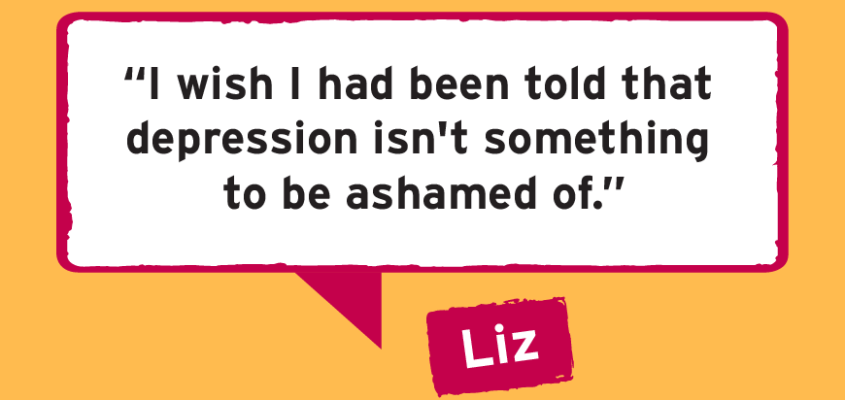
A few tips employers should know on how to handle workplace depression
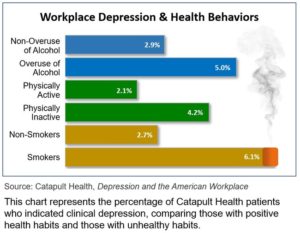
Why are more employers focusing on workspace mental health? Because they recognise it is costly to ignore. Depression costs employers a small fortune each year in loss of productivity. About half of workers with depression aren’t get treated. Yet with proper treatment, depressed people can get better. The key is to help them access adequate care.
Depression is a severe medical condition that not only affects the body, but mood, and thoughts. It can impact the way one eats, sleep, and functions. Depression will not spare a person like a passing blue mood. Without proper treatment, symptoms can last for weeks, months, or years. Appropriate treatment, often involving medication and counselling, can help most people who suffer from depression. You may notice changes in a staff’s behaviour, mood, or appearance.
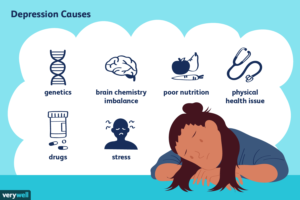
What you might see in the workspace
- Persistent sad and empty mood
- Communicating a sense of helplessness, hopelessness, worthlessness, pessimism
- Uncharacteristic drop in productivity or increase in employee absences
- Signs of substance misuse
- Fatigue or loss of interest in daily activities
- Disturbances in eating patterns. It may result in noticeable weight loss or gain
- Crying, anxiety, or panic attacks
- The fallout from sleep problems, including tardiness or sleepiness
- Irritability, anger issues, agitation, conflict
- Difficulty focusing, remembering, or decisions making
- Persistent physical signs or pain that does not respond to treatment
- Veiled or direct talk of suicide
Not every person with depression will show all symptoms or have them in the same degree. These concerns may also be indicators of problems other than depression. It is not your job to make a diagnosis if you notice these signs. You need to help the person connect with an Employee Assistance Program (EAP). Either through the employer or with mental health support and services available to them.

How does Depression Impact the Workspace?
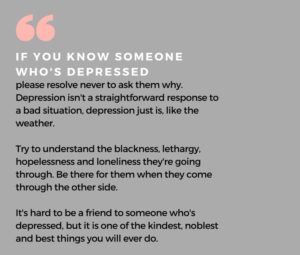
Depression left untreated, may have a severe impact on work performance. It contributes to presenteeism and absenteeism. Employees will be at work but not engaged or employees missing days of work. It may also adversely affect multiple areas of employee performance. Employees lose focus and decision-making skills. They struggle to do time management, completing physical tasks, communication and social interactions. Like most other health issues, early detection and effective treatment reduce the severity and impact of the situation.
Employers can play an extremely vital role in supporting the early identification of depression and improving access to care. It is an investment well worth making.
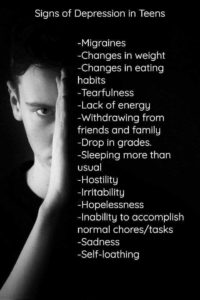
Tips for Employers

Awareness:
Educate your employees and managers about mental health conditions, including depression. Encourage them to seek help when needed. Mental health seems like a taboo topic. So, train managers and employees on how to start a discussion if they are concerned about the staff. Integrate mental health-related information into all health communication strategies. Include contents about depression in firms newsletters. Also, include it on the intranet and in other regular communication platforms for employees.
Consider an initiative that brings an in-depth discussion about depression out in the open. It encourages employees to seek help when they need it. This turn-key initiative offers employers with tools to:
- Enhance awareness about depression in the workspace and its impact on productivity;
- Promote early identification of symptoms; and
- Lessen the stigma surrounding mental health conditions.
Through this right direction, employers get access to a library of customizable high impact tools and resources. The materials are accessed by more than thousands of employers addressing workspace mental health.
The more employers increase the visibility of mental health, the more it will be normalized. It increases the likelihood that staffs will seek care when needed.
Here is helpful information to share with workers and managers to raise awareness about depression in the workspace:
What Depression Feels Like:
- Deep feelings of sadness
- Loss of Interest in daily tasks or social activities
- Difficulty in concentrating and slowed thoughts
- Forgetfulness and trouble remembering
- Trouble making decisions
- Trouble sleeping, or sleeping too much
- Feelings of worthlessness or inappropriate guilt
- Energy loss or increased fatigue
- Irritability, anger or tearfulness
- Weight or appetite changes
How Depression Looks to Co-Workers:
- Withdrawal from the team isolates oneself
- Indifference
- Putting things off, missed deadlines, accidents
- Seems “scattered” or absentminded
- Procrastination, indecisiveness, slowed productivity
- Late to work, afternoon fatigue, accidents
- Unsure of abilities, lack of confidence
- Low motivation, detached
- Inappropriate reactions and strained relationships
- Change in appearance
Accessibility:
Employers are uniquely positioned to motivate employees to get help if they are experiencing depression. One crucial step is to include depression screening in health risk appraisals (HRAs) and EAP programs.
Employers also need to inform their health plans that they want primary care clinicians. It is to conduct regular depression screenings and to offer collaborative care. This research-based care model has more than 80 studies. It shows its effectiveness in improving treatment results. Collaborative care is being provided in the primary care setting with a care manager. He is a primary care provider and a speciality mental health provider. Employers must need their health plans to turn on the CPT billing codes for collaborative care. It became available in 2017 and allowed providers to bill for the care.
Assistance:
Encourage the use of employee assistance and health programs. Early intervention is critical. Remind your workers about the accessibility of resources for staying mentally and physically stable and productive. Inform your staffs often on how to access mental health information and care quickly and confidentially. Push this information out during times of immense stress, during the holiday season and especially when there is an activity that employees may view as disruptive in the workspace and broader community.
When depression is addressed adequately in the workplace, it promises to lower total medical costs, increase productivity, lower absenteeism and decrease disability costs.


How to keep yourself sane in an insane work world?
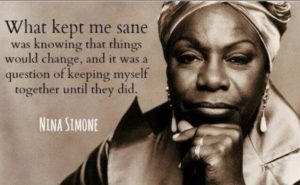
The insane work world is a common Phrase in the 21 st century. To stay sane in the Insane work world is the reasonableness of an employee.
Work can be hectic for some days. No matter how well a machine is oiled, we all get swamped every now and again. Some of the systems glitch, field trip, flu, or act of God may hit your office, and you are going to have to roll up your sleeves and clean it up. If work is bogging you down and you are online to ignore it, you are doing it wrong. Here are a few strategies to keep yourself calm, no matter how crazy your work gets.

How to stay calm in an Insane work world?

- Remind yourself it is only temporary
Life is temporary. Everything in life is temporary. You are temporary. No matter how bad your situations are right now, it is only for a short period. Suck it up and make it through. Then, you will be that much stronger, wiser, and more beautiful for it. You have been through worse than this.
- Meditate or Medicate
According to the holistic view, meditation is the answer all your problem. Your problems become more easy to overcome if you sit still long enough. Meditation can get you great success to keep yourself calm at work. All it takes is to shut your eyes for a few moments and listen to the rhythm of your breath. Feel your chest contract and expand as you take the breathe in and out for a few times. As little as four to five minutes, you will feel refreshed and renewed, making the work a little easier.
If you find things are getting to be too much and your anxiety or stress just won’t go away, you should go and see a doctor. Discuss accessing therapy or anti-anxiety medications. You should also know your limits if you decide to self-medicate, or you will end up hurting yourself more than helping.
- Stop Multitasking
You will bite off more than you can chew sometimes. Never do this. Just because you are facing a pile of paperwork does not mean you have to reach the summit in one shot. Having more work does not mean you have to do more at once. It’s not like you suddenly won superpowers when the work necessitates it. Continue at a pace you are comfortable with. Splitting your focus will just exhaust you out faster.
- Accept Failure
No matter how expert you are at whatever you do, no matter how much you practice daily, you will fail in life. It is unavoidable. Accepting the chance of failure makes it easier to get through the work. Things may worsen if you fail, but unless you are in the military or a bomb squad, few deadlines lead to actual death. Do your best to deliver better results. But if it doesn’t happen, you know at least you did your best.
- Take a Hike
Sometimes you should walk away from the office for a moment to gather your wits. Don’t be afraid to take a 15-minute stroll to keep your sanity despite the insane workload you are facing. It may feel like slacking off, but it’s better for you in the long run. Taking walks can invigorate your mind and body while giving you time away from the heat to formulate plans to get through it all. Try it out.
- Stop Surfing the Internet
Let’s be honest. You are procrastinating right now. There is no real business purpose for you to be online. You are avoiding work. If you weren’t dodging work by surfing the Internet, maybe work wouldn’t be so insane. You would get your tasks completed on time, and you would have time later on to surf the Internet. There is nothing happening on the internet that you can’t wait for another hour or so to read about. If anything important does happen, you will hear about it. So, focus on work.
Some workplaces are always insane. Think about what the hiring manager told you during the interview. Did they say there may be overtime occasionally, and suddenly you are finding out “occasional” means 12-hour days seven days a week? Temporary (i.e. 3–6 months) bouts of insane workloads are normal, but if you constantly feel like work is crazy, maybe this isn’t the job for you. Take a few moments to look at your life and decide if this is worth it. If it’s not, don’t be afraid to leave; just do it professionally.


How are social distancing works reducing the transmission of the virus?

How are social distancing works reducing the transmission of the virus?

Social distancing measures to wane the spread of the novel coronavirus are in place worldwide. These guidelines are for everyone around the world.
As per the strategy, we all need to reduce our contact with others. It will have impacts in terms of mental health and loneliness, especially for the elderly and other vulnerable groups.
So why should we follow actions that seem so extreme? The answer is simple. Social distancing works. It demotes transmission of the virus effectively. It also dwindles the impact on already stretched healthcare services.

How social distancing strategy impacts on people?
Social distancing is one of the effective strategies to reduce the novel coronavirus. Without these steps, an individual with COVID-19 can get expected to infect around three others throughout their infection.
One “generation” of virus infection takes around one week. After one week, that one infected individual will have become four infected individuals (the original infected, plus the three individuals they have infected).
After two to three week, each of the three newly infected individuals can be expected to cause three new infections. It leads to thirteen infections in total.
If this compounding effect continues, after six weeks, the initial infected person will have started a chain of transmission that has led to more than a thousand infections.
What if everyone keeps social distancing?
If everyone in the population lessens their contacts by one third, then each infected individual will only infect two others throughout their infection. It means that after one week, there will be three infected individuals in total.
It is similar to the first scenario. But, if everyone reduces their contacts by one third, after six weeks, the chain of transmission will have caused 127 infections. It is still a large number of infected individuals. But it is substantially fewer than the scenario of over one thousand infections that occurs without social distancing.
Of course, widespread control measures have significant effects on our lives. In China, case numbers have now fallen dramatically due to severe interventions. It is the outcome of social distancing measures they have adopted. They strictly lock down all the corona affected parts of the country. And they used all the possible methods to let people stay at home and low down the spread.
Measures like those must be enforced in the same way in other countries too. If everyone adopts them, social distancing efforts to reduce transmission can still be expected to have significant effects. Social distancing is particularly crucial. We do not know how much the daily transmission occurring from people who is displaying no or few symptoms.
As a result, we shouldn’t try and self-determine whether we pose an infection risk or not. Instead, all of us should take social distancing seriously. We should support each other to follow these guidelines during this challenging time.
Let us face it
The treatment of this pandemic worldwide has not been perfect. A couple of weeks ago, Donald Trump asserted that COVID-19 is no worse than influenza. It has been clear to experts that the death rate is ten times more powerful than other seasonal viruses or H1N1 “swine flu” virus that swept around the world in 2009.
But let us face it. When this virus surfaced in early January, no one of us could have imagined the situation we are in now. The best thing we can do going ahead is to put these things behind us.
This novel coronavirus will continue to have a greater impact over the next weeks and months, most possibly beyond that. While looking out for one another, especially those in vulnerable groups, we should do everything we can to stop this virus. Social distancing is of clear public health importance.

Many companies to furlough more than a thousand employees amid coronavirus fallout
Many companies to furlough more than a thousand employees amid coronavirus fallout. Job loss is there in the coming days with coronavirus epidemic.

Coronavirus spread rapidly around the world since it was first revealed in China less than three months ago. It has dealt an unparalleled shock to the global economy.

As governments are attempting to stabilize their economies, even the top-level companies facing a tough time. They navigate through many altered landscapes. It let millions of people face job losses and interrupted good and services. Following are the announcements from two businesses encountering fallouts due to the dangerous virus outbreak.

Marriott International about to furlough thousands of employees

The largest hotel company in the world, Marriott International Inc., announced Sunday it would furlough their corporate employees soon. More than thousands of employees are working in their headquarters in the U.S and across the globe. They will get furloughed as the company is forced to scale back due to the coronavirus pandemic. This decision, first reported by The Wall Street Journal Sunday, adds to massive recent payroll reductions that began last week.
Marriot is the world’s largest hotel company. Like many of its peers, it is trying to cope up with a plunge in demand due to the coronavirus.
On Sunday, Marriott said that they are furloughing about two-thirds of its 4,000 corporate staffs at its headquarters in Bethesda, Maryland. It is also furloughing around two-thirds of its corporate workers abroad. Marriot has about 174,000 employees globally. The furloughs are assumed to start in April and last up to 90 days.
Marriott added that it hoped to bring back their staff when the demand for hotel and travel accommodations has resumed, and the threat of coronavirus has subsided.
The firm stated Donald Trump, the president of the united states last week that it has begun reducing employees’ hours and starting to furlough what could eventually become tens of thousands of workers at its hotels. It is a big crisis for such a big company where more than lakh of people wear a Marriott name badge globally.
Furloughed workers in the U.S. will get 20 per cent of their salary while those who are still currently employed are facing heavy pay cuts and reduced work hours, the company informed President Trump last week.
U.S. hotel businesses have been seeking $150 billion in direct aid from the government for their employees.
Marriott’s chains and franchisees have owned 7,300 properties around the globe. It covers 30 brands over the different parts of the world, including W Hotels, Courtyard and Sheraton under its 92-year-old umbrella.
President and CEO of Marriott Arne Sorenson also enumerated several other corporate cuts in a video posted to the company’s Twitter on Wednesday that foreshadowed the furloughs.
Sorenson declared that the pandemic had a “more rigorous and sudden financial impact on our business than Since COVID-19 started spreading more swiftly from Wuhan, China earlier this year. Sorenson said that business in China has declined 90 per cent and was ranking in “75 per cent below normal levels” in other parts of the world. It forced hundreds of hotel closures across the globe.
As a result, Sorenson, who has been healing from pancreatic cancer, and Executive Chairman Bill Marriott will not receive salaries for 2020. And his senior executive team is taking a 50 per cent pay cut, according to the company.
3,500 Halliburton staffs in Houston furloughed due to difficult oil market
Headquartered in HOUSTON, Texas (KTRK), Halliburton announced it is issuing a compulsory furlough to 3,500 staffs at its North Belt facility in Houston.
Beginning on March 23, employees on the mandatory leave of absence will work one-week off, one-week on for up to two months. Employees will get paid for the weeks that they are on, but will not get paid for the weeks they are off. The benefits and health insurance of the employees will remain in place.
This decision comes due to recent challenges in the oil market after the coronavirus outbreak.
Helps could soon be on the way, though.
On last Tuesday, the Trump administration said they are about to send checks to the public within the next two weeks. They want to help people through the financial distress of the coronavirus crisis.
Congress still has to approve the plan.
It is not exactly clear about how much money would be received, but Senator Mitt Romney has suggested $1,000.

End of content
No more pages to load




